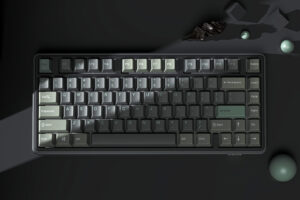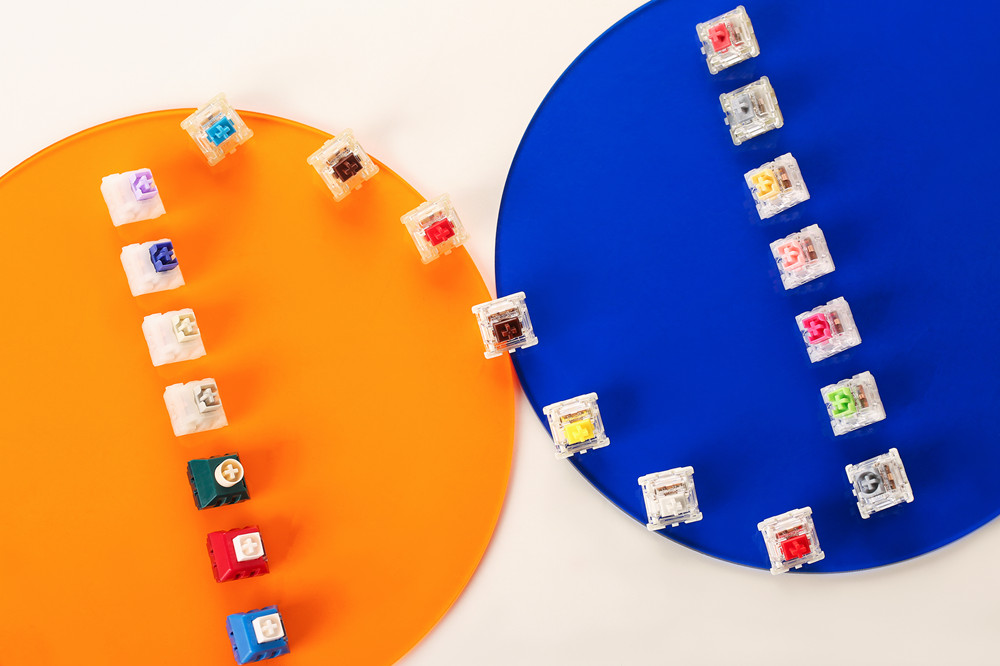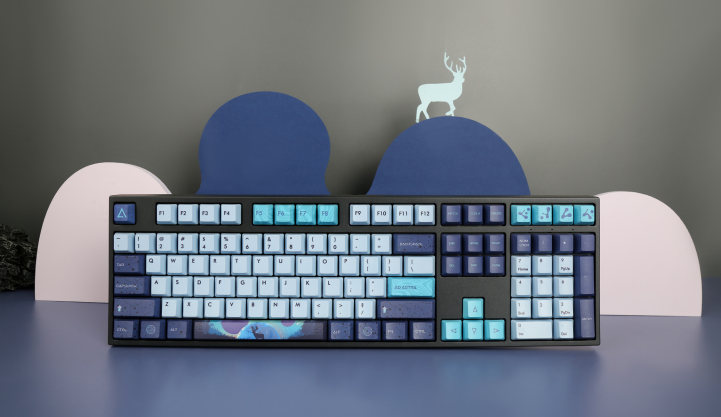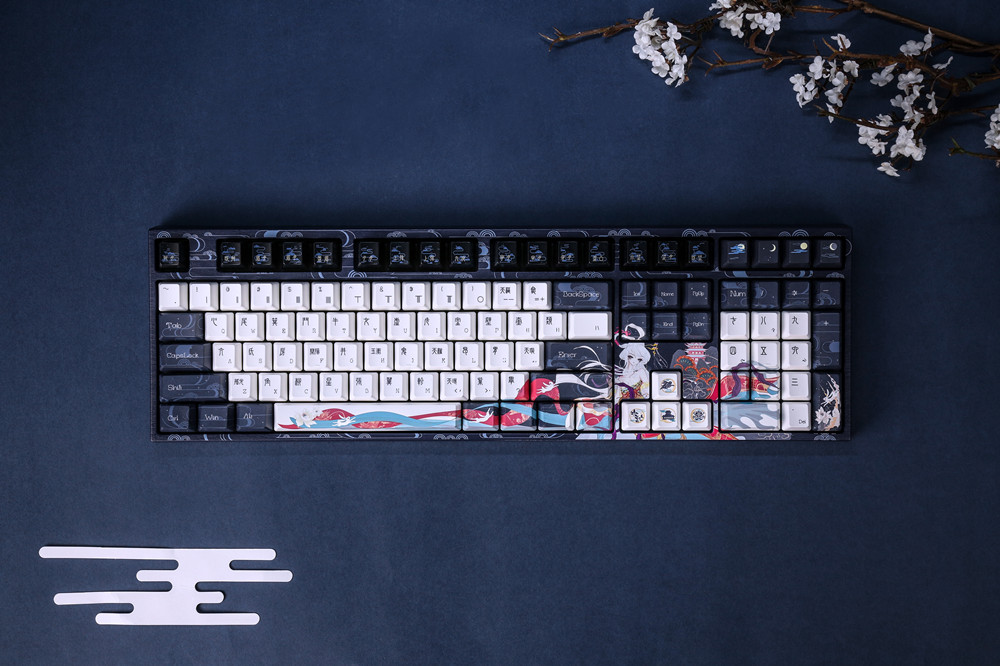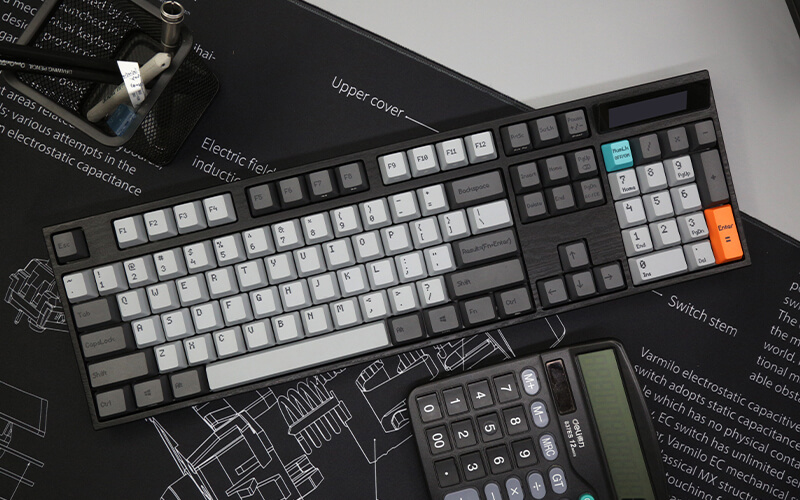When hitting the actuation point, high-performance clicky switches provide an additional click signal. The most significant advantage of clicky switches is that you don’t have to press the key down. You might release the key immediately after you receive your feedback. However, there’s no easy answer to the best switches in general, because it depends on your tastes. We’re going to help you escape through this. This article will tell you what you need to know and help in making a better decision.
Components of Clicky Switches.
Keycap.
The keycap is not a mechanical switch component, but it is slightly responsible for noise produced when the key is bottomed out. By checking your keyboard layout and knowing the size of special keys such as space, shift, backspace, enter, and the bottom row keys such as Ctrl, Alt, Win, and Fn, you can check whether a keycap set would match your mechanical keyboard. Some keyboards require additional keys or smaller keys than a standard layout.
Stem.
A plastic component that directly links the switch to the keycap. The type of stem determines the kind of keycaps to be used on the keyboard. The shape of the branch differs from the switch’s actuation and travel distance. It produces the feel of the keystroke and establishes the kind of switch. Between the upper housing and the contact part, the stem is held. The most popular are Cherry MX-compatible stems, with a cross-shaped stem.
Switch Housing.
The switch housing is the aspect of the switch that assists with precision guidance. It is the mechanical switch’s top base. The leaf spring, a slider, and spring, all three of them are seated inside the switch housing. The switch’s stem is outside the switch housing, which binds the switch to the keycap.
Slider.
In keyboard terms, a slider is a plunger that slides down when the key is pressed, and likewise, when the key is released in the other direction, not all plungers are sliders. Sliders are controlled by guide rails or the walls of a tight-fitting shaft. A plunging-shaft, which is cylindrical, is also called a barrel. Stem (especially in Cherry terminology) is another common word for a plunger. However, it is more convenient to use the ‘key stem’ to refer to the shaft atop the slider on which the keycap is held (something that many sliders do not have).
A slider is used in most keyboard switch mechanisms. It is possible to integrate a slider into the lower part of a keycap or place a keycap on the top position. The sliders are locked into discrete switch components in most mechanical keyboard switches, while the sliders are at the bottom of the keycaps in most rubber dome switches.
For stabilizing a key, a key may have one or more secondary sliders, often as a compliment or a cheaper alternative to a stabilizer bar. Sometimes, sliders are also used to attach keycaps to stabilizer bars embedded inside a keyboard.
Springs.
A little piece of metal shaped like an upside-down U in the spring, with one side of the U shape sticking a little out of the tower’s bottom, resides on the housing’s edge. There is another straight bit of metal, which is not connected to the spring but sticks out of the housing. These two parts are soldered onto the circuit and divided on the slider’s side by the leg.
They go up, they go down, and the mechanical switch doesn’t work without them. They are springs, the main component of mechanical keyboards.
Springs can add or eliminate tactility, increase responsiveness, and even decrease the fatigue of typing.
Metal contact leaves.
When two metal components (known as ‘leaves’) maintain contact, mechanical keyboards actuate. The slider rests Inside the metal spring, which offers resistance and resets the key to its resting position. When the key is pressed, the spring buckles and the slider forces one metal leaf against another, causing a key-press. The spring pushes up as the key is released, and the contact between the leaves is reset.
What is the most popular mechanical keyboard, Cherry MX switch?
A finely engineered mechanical switch that sets the performance standard for keyboards lies beneath every keyboard key. One of the most critical aspects of gaming gear is these switches, and that is why most typists and gamers love mechanical keyboards. There is a different travel time, clicking noise, and response for each of these switches that set it apart.
You get an immediate audio response when you press the keys on a mechanical keyboard. This feedback has been shown to increase a person’s typing speed and productivity.
Cherry switches are mechanical switches that have been in the industry for as long as we can remember. The brand has been supplying us with excellent vital technologies for many decades to enrich our gaming experience. For many years, these switches have been known for their swift response, high-quality performance.
The Cherry MX switches are the most powerful and reliable of all the various types of switches the brand has made so far, explaining the Cherry MX series’s widespread popularity. Let’s dive into different cherry switches.
Cherry MX Blue clicky switches.
Cherry MX Blue and Cherry MX blue RGB switches are click-style switches that provide each keypress with much more meaningful audible and tactile feedback. Click-style key switches tend to have higher reset positions and need higher actuation power so that they can perform a little slower in rapid-tap situations.
These switches will be appreciated by gamers and writers who do not mind trading a bit of speed for definite aural and tactile keypress confirmation. Compared to other Cherry switches, this Cherry MX blue switch is less favorable for gaming. For writers who want to know whether the key is registered or not, it is most appropriate.
Cherry MX Green clicky switches.
In the Cherry MX family, the Cherry MX Green switch is a medium-stiff, tactile, clicky mechanical keyboard switch. The Cherry MX Green is a switch that is both tactile and clicky. When the activation point is hit, you can both feel the tactile bump and hear the “click” that takes place. The switch feels close to a buckling spring due to the required actuating force (80 cN), which takes about 70 cN force to actuate
The user will quickly note the switch is moving against your fingertips when pressing on the key (the slower you push, the more you can feel it). Users used to light switches can have difficulty getting used to green switches since they are a stiff switch.
The plunger consists of not one but two parts, unlike most other Cherry MX switches: a green plunger (connected to the key) and a white inner slider (which opens/closes the circuit).
The inner slider’s movement is limited by the green plunger, which can lift or force down the slider.
The inner slider is held by the leaf spring when at rest. Until near the activation point, the green plunger does not press on the slider.
The green plunger has pressed the white slider out of rest at the activation point into a position where the leaf spring force on the slider’s inclined plane will force the slider towards the bottom. The leaf spring experiences no more slider resistance and closes the circuit. The critical resistance decreases sharply because the green plunger is not pressing on the white slider anymore.
Other Clicky Switches.
Varmilo EC switches V2.

Varmilo EC mechanical switch V2 now has four types of feelings for typing. They are linear Daisy, Sakura, and Rose, and clicky switches for Ivy. A special PCB developed by Varmilo, which is different from the traditional mechanical keyboard PCB, has to be used on the four EC switches.
The clicky switch Ivy: 50gf actuation force, 60gf tactile energy, comes out “clicky” sounds, similar to Cherry MX Blue. The Ivy V2 is still under development.
Kailh BOX Jade clicky switches.
The Kailh Box switches have been an enormous success, forcing developers like NovelKeys to push the limits of what a standard switch is a today with excellent feedback and reliability. The switch is perfected every bit to get the best experience, from the looks to the tone. The switch is a pleasure to use. NovelKeys designed the KAILH BOX switches, which feature a thicker click bar, creating a stronger bump on actuation and a louder, more excellent click than usual BOX switches. These switches have an operating force of 50g-60g. The BOX Jade switch has the same characteristics as the BOX White switch.
Kailh BOX White clicky switches.
Due to the unique click bar design and design and smooth feeling and consistency, the kailh clicky box white switch is popular in the foreign game Fortnite. It is a better gaming option.
The Kailh BOX white switch, all-in-all, is excellent. The switch’s feeling is excellent, the design is good, and it is IP56 water and dustproof for life’s little accidents.
Kailh Sherbet clicky switches.
Not only is the Sherbet switch the first click switch we’ve seen in quite a while, but it’s also the first non-box click switch in a much longer stretch with a click bar.
These switches run the gamut of weights with a travel distance of 4.0mm, beginning with a 45-gram activation force, a peak force of 83 grams, and a bottom-out force of 70 grams. It has a white bottom with a clear polycarbonate top, which, unlike other box-click switches, also has a split LED slot that allows LEDs to be used. The stem is pretty orange and close to Helios in color.
Conclusion.
There are various kinds of switches available for customizing design on our official website. Kailh BOX Jade, Kailh BOX White, and EC Ivy switches are all available in the Varmilo Premium Customization System. You can check them out.
